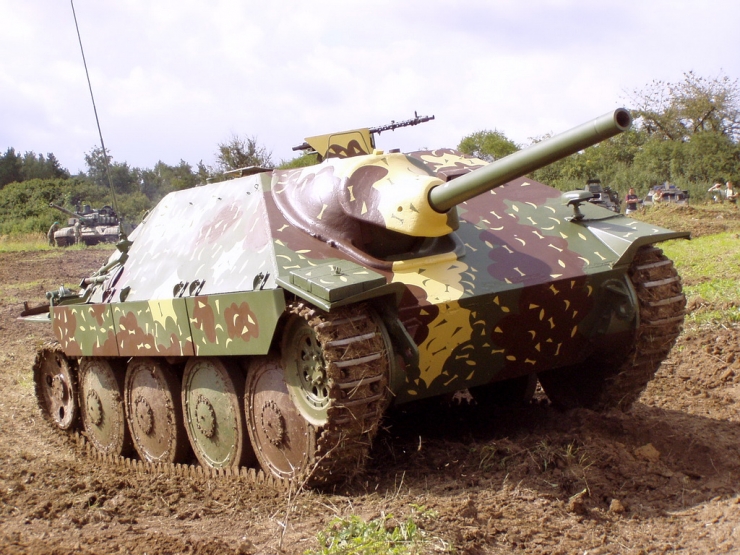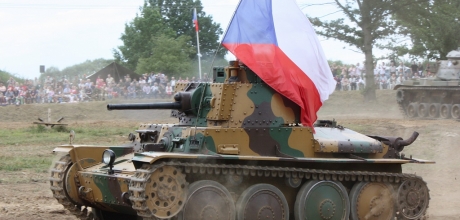
With the German occupation of Czechoslovakia, both former rivals – Škoda and ČKD – found themselves working for the German industry. Most of the promising pre-war projects were cancelled and the production focused on German designs. The former LT Vz.38 was produced further for the purposes of the Wehrmacht and between 1939 and 1941 it served as one of the main German tanks. Despite the armor upgrades the light tank was becoming increasingly obsolete. An attempt to create a dedicated scout tank (known as Panzer 38 (t) n.A. – or TNH n.A.) failed as well – mostly due to political reasons as the tank proved during trials to be superior to the Luchs.

That did not however stop the attempts to use the Praga suspension for different purposes. The best-known three were the Grille self-propelled gun, the Marder III tank destroyer and the Jagdpanzer 38 (t), also (incorrectly) known as the Hetzer (the name “Hetzer” is not historically correct – it belonged to one of the light E-series tank destroyers and got mixed up with the 38 (t) after the war). The Praga suspension (designed by Alexej Surin) was an excellent platform – in fact it was so good that the Germans (at the end of the war) chose it as one of the three unified platforms all the German vehicles were to use (the other two being the Panther and Tiger II chassis). Other than that, there were numerous Waffenträger projects built upon the Praga suspension as well as – what is perhaps one of the most interesting and promising projects – a fully tracked APC known as the “Kätzchen” (“kitten”). Sadly the project was discontinued after the war when the Czechoslovak army chose the halftracks for the APC role.
Read more about the Czechoslovak armor development after the war.








